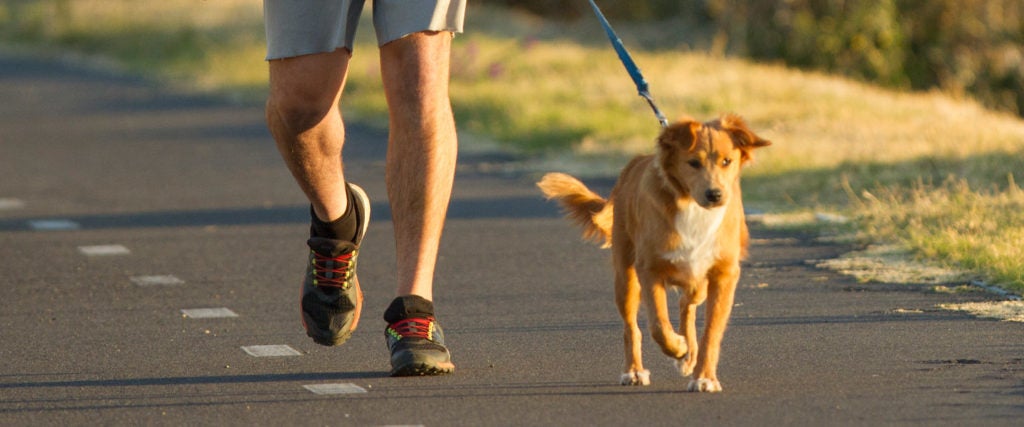I very much would like to get a dog. “You won’t like it so much when you’re waking up at 6 a.m. to walk it in the freezing cold!,” you’re probably saying to yourself. Well, SHUT UP!
While I know I won’t enjoy that particular experience, it’s actually one of the main reasons why I want a dog in the first place. In addition to being a cute creature that’s required to be my friend, dogs also typically force you to get out and get moving. A dog is first and foremost an emotional companion and commitment, but to an extent, a dog could also be a fitness strategy. So, how exactly could I prepare to build an exercise routine primarily around caring for my hypothetical future pup?
There are a lot of variables at play, but none is as significant as the breed and temperament of the dog itself. If you’re super committed to creating a dog-centric active lifestyle, you might want to acquire a particularly active dog. Per the American Kennel Club (AKC), some of the most active breeds are ones traditionally bred for work, such as Shetland Sheepdogs, German Shepherds and Siberian Huskies. These dogs are essentially designed to run and will happily do so with you, but that comes with some caveats. Not only do they fare better in areas with lots of room to run, they’re also more comfortable in cooler climates. A Siberian Husky, for example, may not exactly enjoy a long walk through Manhattan in the summertime. Instead, larger active dog breeds may be happier living somewhere with at least a big backyard for them to roam around in, which kind of defeats the purpose of you needing to go out and walk them several times a day, anyway.
With that in mind, there are some AKC-recommended breeds that may be more suited to an active city life. Russell Terriers, Miniature Pinschers, beagles and certain poodle varieties all need daily exercise, but their smaller stature may make them a better fit for having that exercise take place on sidewalks and urban dog parks. Conversely, there are many other small breeds, like French Bulldogs or Pugs, that can’t handle excessive exercise at all as the result of their short snouts and flat faces impeding their breathing. Even so, most dogs require at least 30 minutes of exercise per day, while the most active breeds should get closer to an hour or more.
- Read Next: Why Do My Dog’s Paws Smell Like Fritos?
Though doing the research for what specific breeds might suit your lifestyle best is essential, it’s not foolproof. Dogs may inherit common traits of their breed, but their actual needs will vary according to the individual dog. Moreover, there are tons of shelter pups whose genetic makeup is a mystery. With any dog, their level of activity and requirements for happiness will simply have to be revealed with time.
All this is to say, developing some type of fitness regimen around your dog might be hit or miss. But if you’ve spent the last year essentially inactive, getting any type of dog that needs to go out for walks will at least add an extra 30 minutes of light aerobic activity to your day. In fact, getting a dog will require it. Maybe you can justify your own laziness, but you don’t ethically have the option of denying your pet of the exercise it needs.
For people who might otherwise find every excuse not to get moving, a dog could provide accountability and discipline, but at the same time, don’t overestimate yourself. I know I’m not going to become a long-distance runner, so I’m not going to get a dog that would be happiest doing that. Perhaps a little Russell Terrier mix that wants to walk around for an hour a day and can handle the occasional hike but won’t feel trapped in a city apartment will do, instead. I’m sure it will be cute enough to make going out on a winter morning tolerable.

